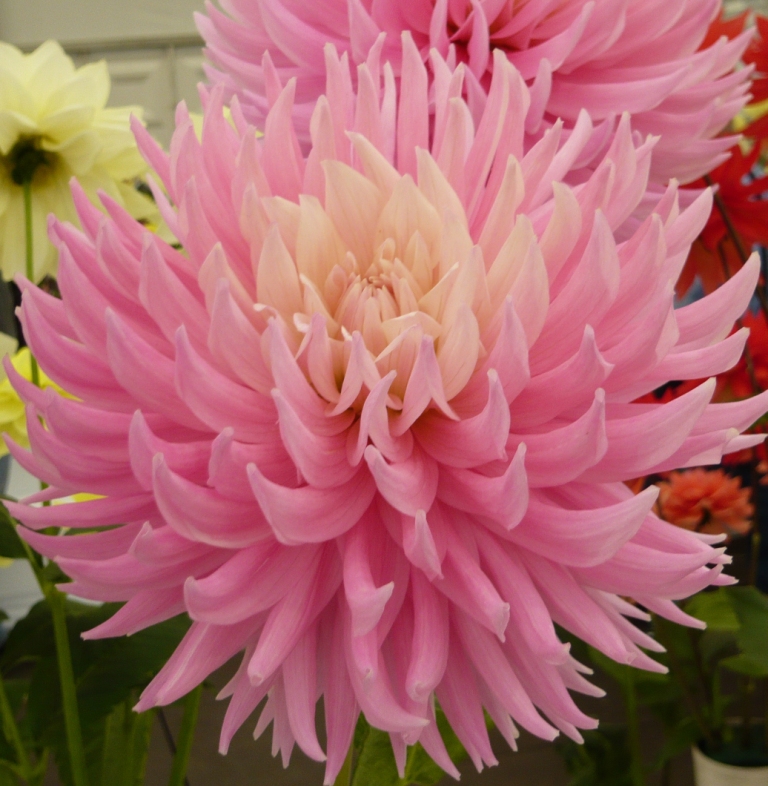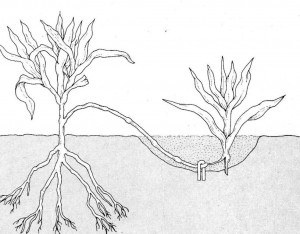
Free Plants from Layering, Cuttings and Division
It can be very satisfying to grow more plants for free. There are several ways including layering and cuttings than can help you increase your stock of plants. Then you can give them away, plant them, resell or just use them to protect against losses of your favourites.
Layering
As shown above layering involves little trauma to the parent plant and works particularly well for plants with a single tap root.
A low stem or branch is bent into contact with the soil and pegged down to the soil. I put more soil or a stone over it to keep it down. Encourage the end to poke vertically out of the soil and tie it too a cane if it needs support. Try layering on Rhododendrons or Daphnes but not annuals.
For woody plants it will take some time for new roots to form before the new plant can be cut from the parent. To speed up the process cut the stem half-way through and make a small slit. This will form a tongue where the new roots can start to grow.
You can make your own pins to hold plants down by bending a 6 inch piece of firm wire a couple of inches from the end.
For some plants like violas, primulas and heathers, it is enough to cover the stems from the crown with new compost and in a few months new roots will have formed making pre-rooted cuttings.

Pinks and Carnations are popular plants to propagate from layering.
Hardwood Cuttings
Take a long cutting of ripened wood. Trim below a node and remove lower leaves. Remove a one inch long, thin strip of bark at the base of the cutting. Dip in hormone rooting compound and plant two-thirds into soil and firm down. Semi-ripened wood works better for some plants like Ericaceas.
Roses can be increased this way but success is not 100%.
All such cuttings should grow true to the original plant.
Other Cuttings
Young growth 1-3 inches long should be cut from side shoots or stem of the parent plant. Trim below a node (leaf joint) and remove any leaves that will be below soil level. Dip in hormone rooting powder or liquid.
Put several cuttings around the edge of a pot and water the soil from the bottom. A base heater will speed up root growth but any light place out of direct sun will suffice. Cover the pot with a plastic bag or the top of an old pop bottle to retain moisture until new growth is noticed. This method is good for Dahlias, Lupins and Delphiniums amongst other herbaceous plants.
I often just push prunings (of Box and Flowering Currant) back into the soil.
Most of my Pelargoniums are now generations old from numerous cuttings.

Rosettes
Some plants grow off-shoots or extra rosettes.
These can be potted up and treated like cuttings by putting them in gritty compost to avoid rotting. As with all propagation use clean, sharp tools and fresh materials.
Division and Root Cuttings
Hebaceous plants like Hostas, Phlox, Day Lilies, Campanulas, Michaelmas daisies and Ferns can be increased by division of the root. Take the edge of a clump with some root and replant. Alternatively dig up the plant and chop the root into large pieces discarding any poor material from the center of the plant. Replant the new pieces and you will have new rejuvenated plants next year.
Be on the look out in your garden for suckers that can be grown on to form new plants.
Loganberries and Blackberries may have rooted them selves from the tips of stems that touched the soil.
Self sown seedlings or collected seed is one of the most popular way of acquiring more plants.
Good luck with finding and creating your own Free Plants.
